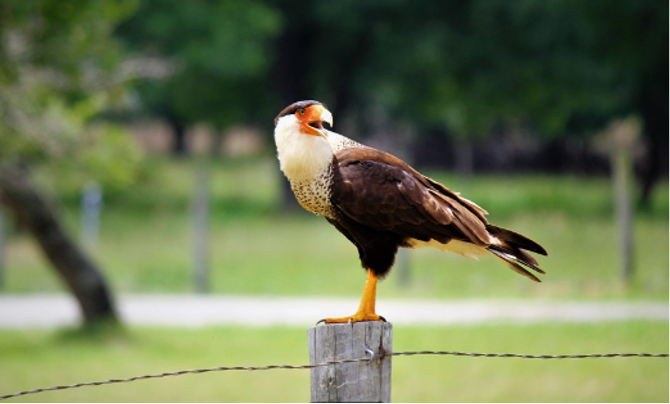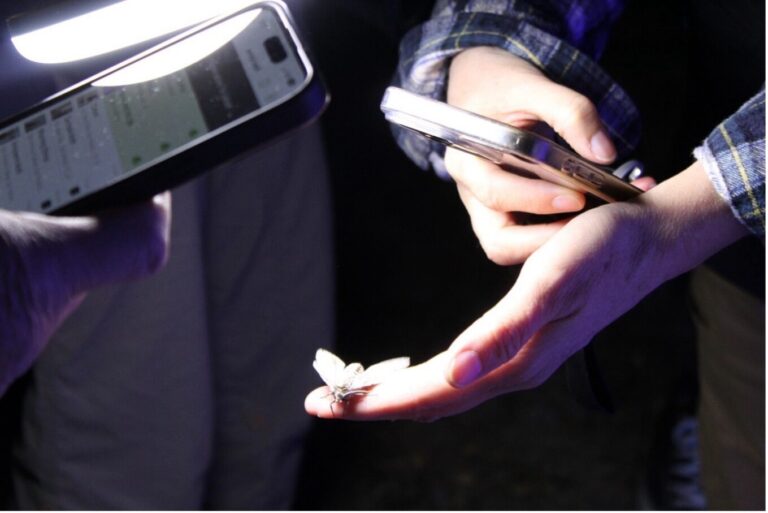Last Updated on January 30, 2024
I’ll never forget the first time I saw a pair of Crested Caracaras (Caracara plancus). I was running through Olmos Basin Park in San Antonio and spied what I thought was a pair of Black Vultures (Coragyps atratus) drinking from a rain puddle. On closer inspection, I observed some unique distinctions: striking white and black plumage, long legs, bright yellow-orange faces, and blueish silver-hooked beaks. What were these chicken/vulture/eagle-looking hybrids? Puzzled, I flipped open my iNaturalist app, snapped a picture, and learned that the birds were Crested Caracaras, members of the Falcon family common throughout the San Antonio River Basin, the Southern United States, and parts of Central America. And their population appears to be expanding.
A pair of Crested Caracaras at Olmos Basin Park.
The first part of the Crested Caracaras name refers to their long, black head crests. The word “caracara” comes from a South American indigenous word that refers to their guttural, rattling calls that apparently sound like running a stick along a fence. Unlike most birds of prey, Crested Caracaras stalk and run down their game on foot rather than diving or pouncing. They are opportunistic eaters and have an extensive and varied diet. You can often spot them walking along the ground looking for insects and reptiles, wading in shallow water to catch fish and amphibians, or along the road waiting for fresh roadkill. Crested Caracaras are quite aggressive, flying relatively low to scan the ground for prey and beating out Black Vultures and Turkey Vultures (Cathartes aura) at carrion feasts.
These birds are the only members of the family Falconidae that collect materials to build a nest with their mate, which they will stay with for several years. Other falcons use an old nest or a depression in the ground to lay eggs. Crested Caracaras and their family group will also help clean each other’s feathers in a behavior known as allopreening.
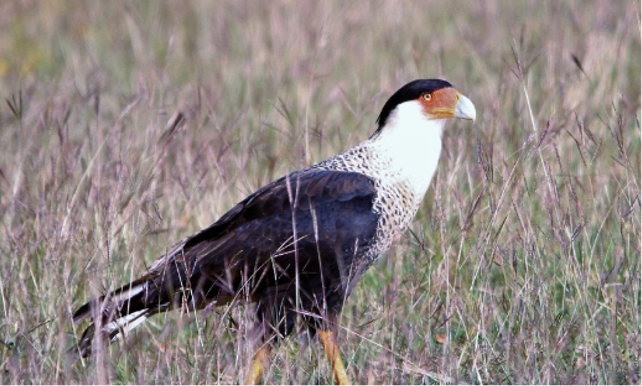
Did you know? The oldest recorded Crested Caracara was at least 21 years, nine months old!
Photo Credit: Peter Joseph
Is that a Crested Caracara on the Mexican flag?
The short answer is No. The bird on the Mexican Flag is most believed to be Mexico’s National Bird, the Golden Eagle (Aquila chrysaetos), or as it’s known there, “El Águila Real.” However, some scholars and archaeologists believe that the pre-Columbian Aztec pictograms used as a reference for the Mexican flag depicted a Crested Caracara. They also say that many indigenous and pre-Hispanic peoples revered the bird. This debate is further confused by the fact that a common name for the Crested Caracara is “Mexican Eagle.” Nevertheless, the Golden Eagle was enshrined as the national bird of Mexico in 1984. Sorry about that, caracaras.
Where can I see a crested caracara?
Over 650 observations of the Crested Caracara have been reported in the four largest counties of the San Antonio River Basin: Bexar, Wilson, Karnes, and Goliad. There have also been numerous sightings along the coastline of San Antonio Bay.
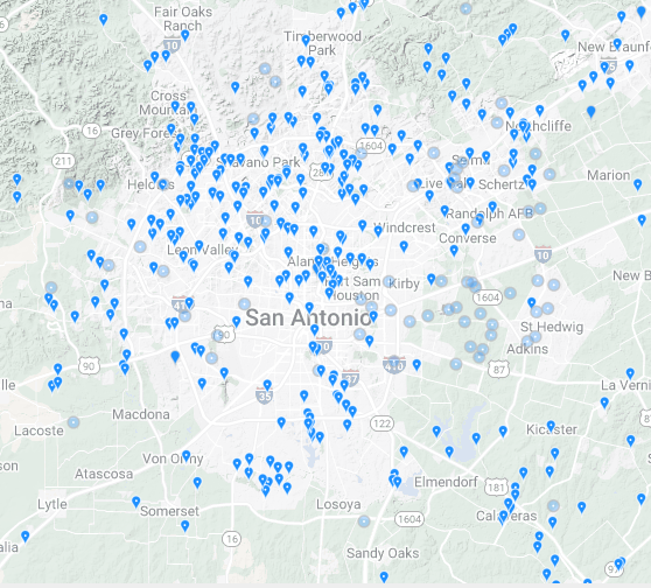
A map of Crested Caracara sightings in San Antonio. Source: inaturalist.org
Your best chance of seeing this bird of prey is during their favored foraging times: early mornings and late afternoons. Look for them flying low, walking on the ground in open landscapes, foraging on a carcass, or perching on the tallest tree or structure nearby. Caracaras avoid areas with thick ground cover, so head to pastures, farmlands, brushlands, open fields, roadways, or golf courses for the best chance of spotting them. You might also see them near slaughterhouses, henhouses, and dumps scavenging for food.
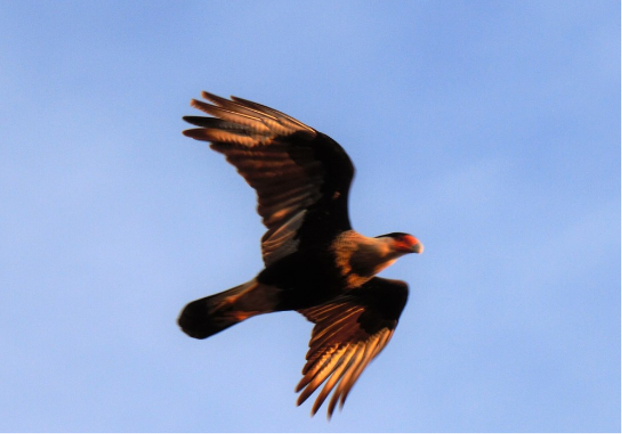
One way to quickly identify a flying Crested Caracaras is by its white under-tail and outer wing feathers.
Photo Credit: Peter Joseph
How Can I Help These Birds?
Although Crested Caracaras are listed as a species of low conservation concern, we can still take steps to ensure their future in our watershed. Like many other bird species, their habitat faces threats from urbanization, the subsequent loss of nesting areas, and collisions with vehicles on roadways. Some landowners also see the Crested Caracara as a threat to pets and livestock, although the Texas Parks & Wildlife Department has debunked this. For studies on the impact of climate change on the range of the Crested Caracara, check out this study from the Audubon Society.
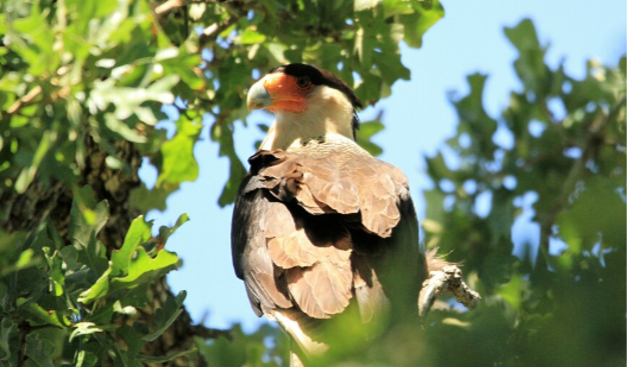
In addition to the Crested Caracara, there are ten other species of caracara. However, they live exclusively in Central and South America. Photo Credit: Peter Joseph
Ultimately, the best way to help these fantastic falcon-like avians is to learn more about them and advocate for sustainable land development that protects the biodiversity of birds. With these actions, we can help the Crested Caracara and the health of ecosystems throughout our watershed.

